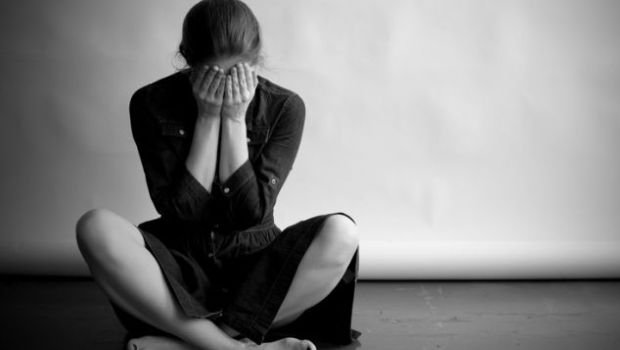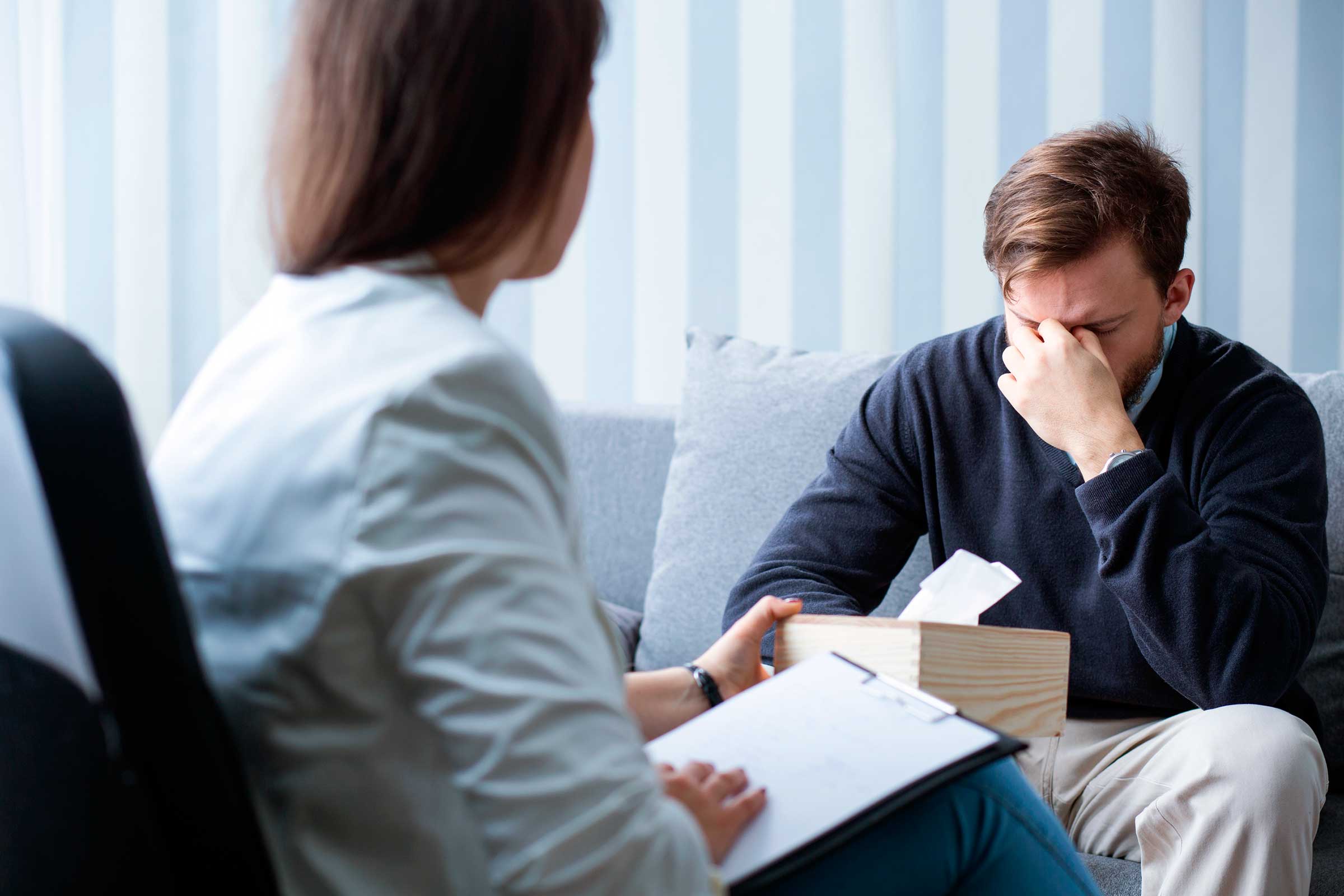Depression Everyone has experienced anxiety and depression.
Everyone has experienced anxiety and depression, for it is a part of the human condition. Stressing about bills or missing a loved one can bring feelings of sadness or anticipation of the unexpected. These are normal reactions to trying times, but some people feel this way all the time.

Depression Disorders
Healthy people experience depression from time to time throughout their lives. It runs its course and does not last very long. People who suffer from depression as a disorder struggle with lethargy everyday throughout the day. They feel hopeless, unmotivated, and helpless to change their growing indifference toward daily activities and relationships. Mental health professionals mark the line of concern at about two weeks of consistent and unimproved behavior. According to the Anxiety and Depression Association of America, depression disorders are different for different people, and they are studied and treated according to several sub-categories:
Bipolar Disorder is also referred to as Manic Depressive Illness. The term bipolar reflects the sufferer’s mood swings between two extremes, one pole is high (manic), and the other is low (depressive).
During the manic phase, a person will exhibit energetic impatience, impulsiveness, careless spontaneity, inappropriate public behavior, increased sex drive, talk incessantly about one thing and then another as if his or her train of thought is not focused, and a lack of sleep and patience.
During the depressive phase, a person will exhibit symptoms opposite to those displayed during the manic phase. He or she will be unable to be happy about situations and life in general. Apathy settles in and they become indifferent to who and what they love and care about.
[pullquote]
According to the Anxiety and Depression Association of America, depression disorders are different for different people, and they are studied and treated according to several sub-categories.
Though depression affects people in different ways, some generic symptoms of it are:
Consistent feelings of emptiness, guilt, hopelessness, and/or worthlessness
Inability to alleviate digestive problems, cramps, headaches, and body pain
Inability to focus or make decisions
Too little or too much sleep
Suicidal tendencies
Men tend to experience extreme fatigue, indifference, irritability, and insomnia, while women
Major Depression represents the most severe of depressive states. It is overwhelming to the point that it impedes normal, daily activities inside (eating, sleeping, and keeping order in the home) and outside (working, shopping, and running errands) of the home. Sufferers may experience a one-time episode or a series of extended episodes throughout their lives.
Medical depression is associated with a serious health issue like a stroke, cancer, HIV/AIDS, or diabetes. These depressed people must deal with a life threatening illness and the bills and time spent that comes along with them. Alleviating the depression usually allows the person to focus on the medical illness and actually improve.
Persistent Depressive Disorder (PDD) is less severe than major depression, but it is consistent. A person who suffers from this may seem like a very pessimistic person. The symptoms are similar to major depression, but they occur intermittently, and must continue to manifest for at least two years in order to qualify as PDD.
Postpartum Depression is often erroneously referred to as “baby blues.” It usually occurs within three months after giving birth to a child, but symptoms may manifest immediately after or not surface until a year later.
Psychotic Depression occurs when a person with severe depression also develops a psychosis. Psychosis is a mental break from accepted reality. A psychotic person may be deluded and believe that they are the subject of a conspiracy; or they can hallucinate alternate realities.
Seasonal Affective Disorder (SAD) is associated with depression that manifests during the bleak months of winter. Since the days are shorter and the nights are longer, light therapy is often prescribed. This treatment along with medication and therapy has proven effective in the past.
[pullquote]
According to the Anxiety and Depression Association of America, depression disorders are different for different people, and they are studied and treated according to several sub-categories.
[/pullquote]
Though depression affects people in different ways, some generic symptoms of it are:
Consistent feelings of emptiness, guilt, hopelessness, and/or worthlessness
Inability to alleviate digestive problems, cramps, headaches, and body pain
Inability to focus or make decisions
Too little or too much sleep
Suicidal tendencies
Men tend to experience extreme fatigue, indifference, irritability, and insomnia, while women are likely to experience the low self-esteem of guilt, hopelessness, and worthlessness. Men statistically turn to self-medication with drugs and alcohol, and women lean more toward attempting suicide.
Depression in children and teenagers is more difficult to diagnose than with adults because the symptoms are similar to growing pains, like pretending to be sick, avoiding school, irritability, and acting out in class or other public places. Teenagers have to deal with the angst of puberty and very often have a combination of depression and other complicating conditions, like substance abuse, eating disorders, and anxiety. They typically continue to experience these problems into adulthood.
Depression is believed to be caused by biological, environmental, genetic, and psychological influences. It is a brain disorder long-believed to be a result of a chemical imbalance that blocks communication from neurotransmitters. There are too many variables involved to scientifically link this disorder to heredity.
[pullquote]
Depression in children and teenagers is more difficult to diagnose than with adults because the symptoms are similar to growing pains.
[/pullquote]
Modern technology, like magnetic resonance imaging (MRI), can display differences between the brains of the afflicted and the healthy in areas that control sleep, behavior, mood, appetite, and thinking. As interesting and informative as this machine is, it cannot determine the cause of the depression or be used in the diagnosis of the condition.
Diagnosis involves a physical exam to rule out conditions that may be responsible for similar symptoms. Once physical illness is ruled out, then a person’s mental state may be evaluated. A mental health professional will then take over the case and start a conversation about what is going on with the patient.
Depression and anxiety are so often associated with one another that the general public tends to group them together as if the two terms were interchangeable. There is a difference between anxiety and depression. Though no scientific research is available that supports the notion that one disorder necessarily causes the other, practically half the people who suffer from one of them are also diagnosed with the other.
Anxiety Disorders
Friends and family do not really understand the situation and can often make it worse by treating the afflicted person like they should just be able to snap out of their dark mood or stop worrying about insignificant things.
Anxiety disorders are most often the co-conspirators to depressive disorders. Tens of millions of Americans suffer these disorders that are based on unreasonable dread and fear.
Specified Phobias focus on particular things, usually non-threatening, about which to be anxious. These fears may be real or imagined. For example, a person may be deathly afraid of spiders, but another may be afraid of the idea of being buried alive. The person suffering from arachnophobia is more likely to be confronted by a spider than the other person is likely to be buried alive. This anxiety disorder is only debilitating if it is associated with some aspect of daily activity.
Why Are Women More Prone to Suffer from Depression and/or Anxiety than Are Men?
Generalized Anxiety Disorder (GAD) deals with obsessive worry in generic terms. Everything is a matter of reflection that is approval-seeking. Sufferers dread disaster at every turn and experience constant stress, headaches, ulcers, fatigue, and muscle and body aches to name only a few symptoms.
Obsessive-Compulsive Disorder (OCD) is about a self-sustaining circle of ritual and sequence. People have disturbing or upsetting thoughts which cause them to be anxious. They develop rituals that are intended to control these thoughts, but usually become dependent upon the rituals instead.
Panic Disorder manifests in very real physical symptoms. Those who suffer become physically ill and display the symptoms of a debilitating condition like a heart attack. These attacks reinforce the person’s fear by him or her anticipating the next one. Though panic attacks are a symptom, alone they do not constitute panic disorder. This disorder is crippling in that it promotes self-isolating behavior through shame and fear. At its worst, this disorder progresses to agoraphobia, a fear that confines a person to his or her home.
Post-Traumatic Stress Disorder (PTSD) is connected to anxiety caused by a threat of or actual physical harm done to the person who suffers. Some people are affected by witnessing disturbing events. The anxiety is nostalgic and can be invoked at any time. Those who suffer relive the events in flashback and the anxiety is reinforced by reliving the trauma.
Social Anxiety Disorder relies on a person’s acute awareness and concern about how they are perceived by others before, during, and after appearing in public. Something as routine as a trip to the grocery store becomes an obsessive nightmare, and a person may restrict his or her social circles to family members.
Specified Phobias focus on particular things, usually non-threatening, about which to be anxious. These fears may be real or imagined. For example, a person may be deathly afraid of spiders, but another may be afraid of the idea of being buried alive. The person suffering from arachnophobia is more likely to be confronted by a spider than the other person is likely to be buried alive. This anxiety disorder is only debilitating if it is associated with some aspect of daily activity.
Why Are Women More Prone to Suffer from Depression and/or Anxiety than Are Men?
Women are twice as likely to suffer from depression and anxiety symptoms. Hormones have been determined as the cause. A woman is exposed to fluctuating hormone production throughout her life. Puberty, pregnancy, and menopause are times of significant transition and production of various hormones that leave women more susceptible to conditions that are based on faulty neurotransmission. Their environmental pressures are also consistent in that their societal duties dictate round-the-clock and on-call duties like caring for children and the elderly. They are also more likely than men to suffer abuse, poverty, and fear of insecurity.
Just like depressive disorders, anxiety disorders must be diagnosed by a professional once medical reasons have been ruled out of the equation. Medication, therapy, and medical procedures are available to alleviate these conditions, but the greatest successes come with a combination of medication for anxiety and depression and some sort of psychotherapy. The medication helps correct the imbalance and the therapy redirects behavior so that it does not reinforce the condition.
.jpg)
Here is a great Video to help ease any Depression or Stress...
Have a great Day, Week, Month, Year and Beyond...
@pocketechange